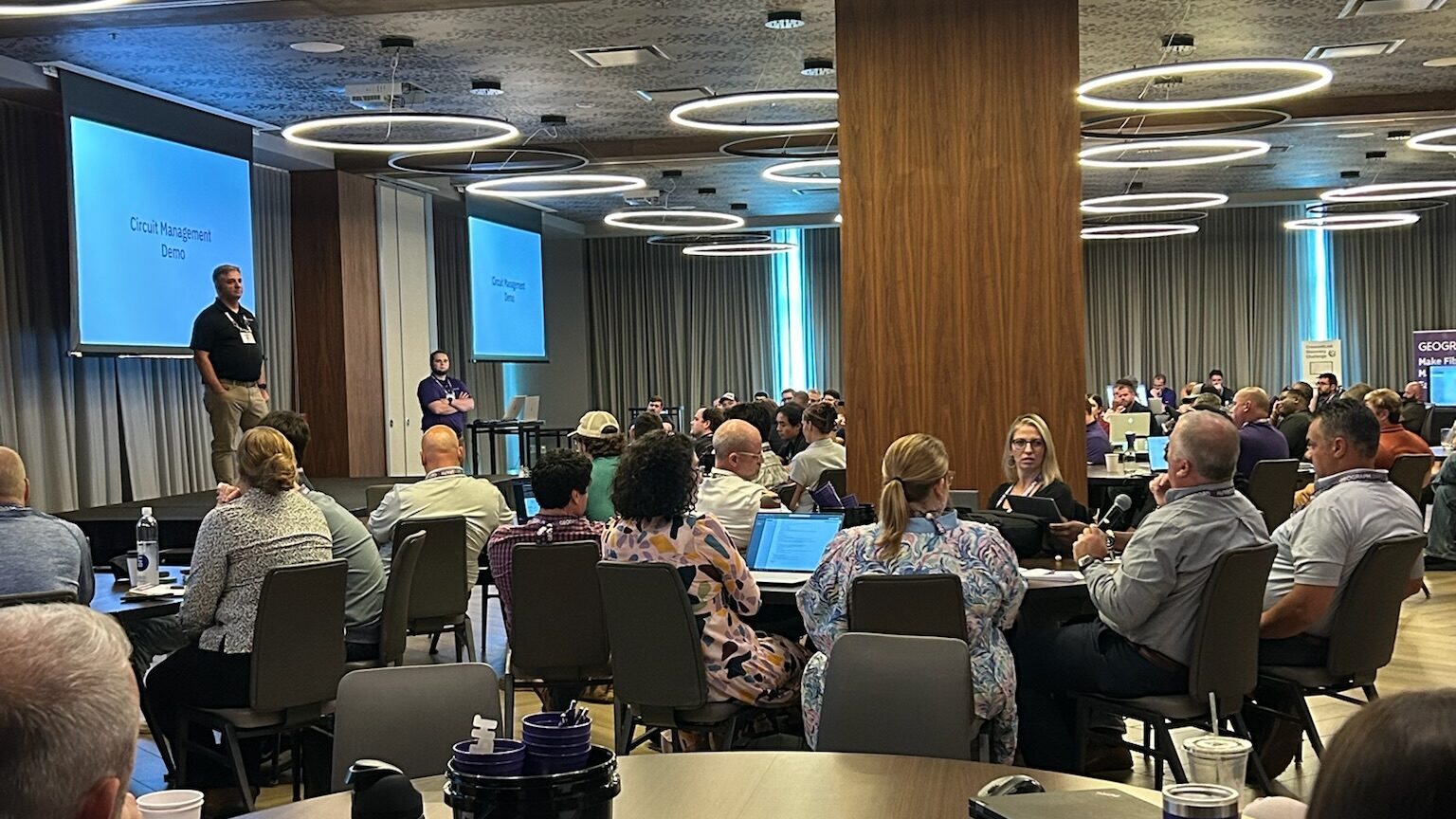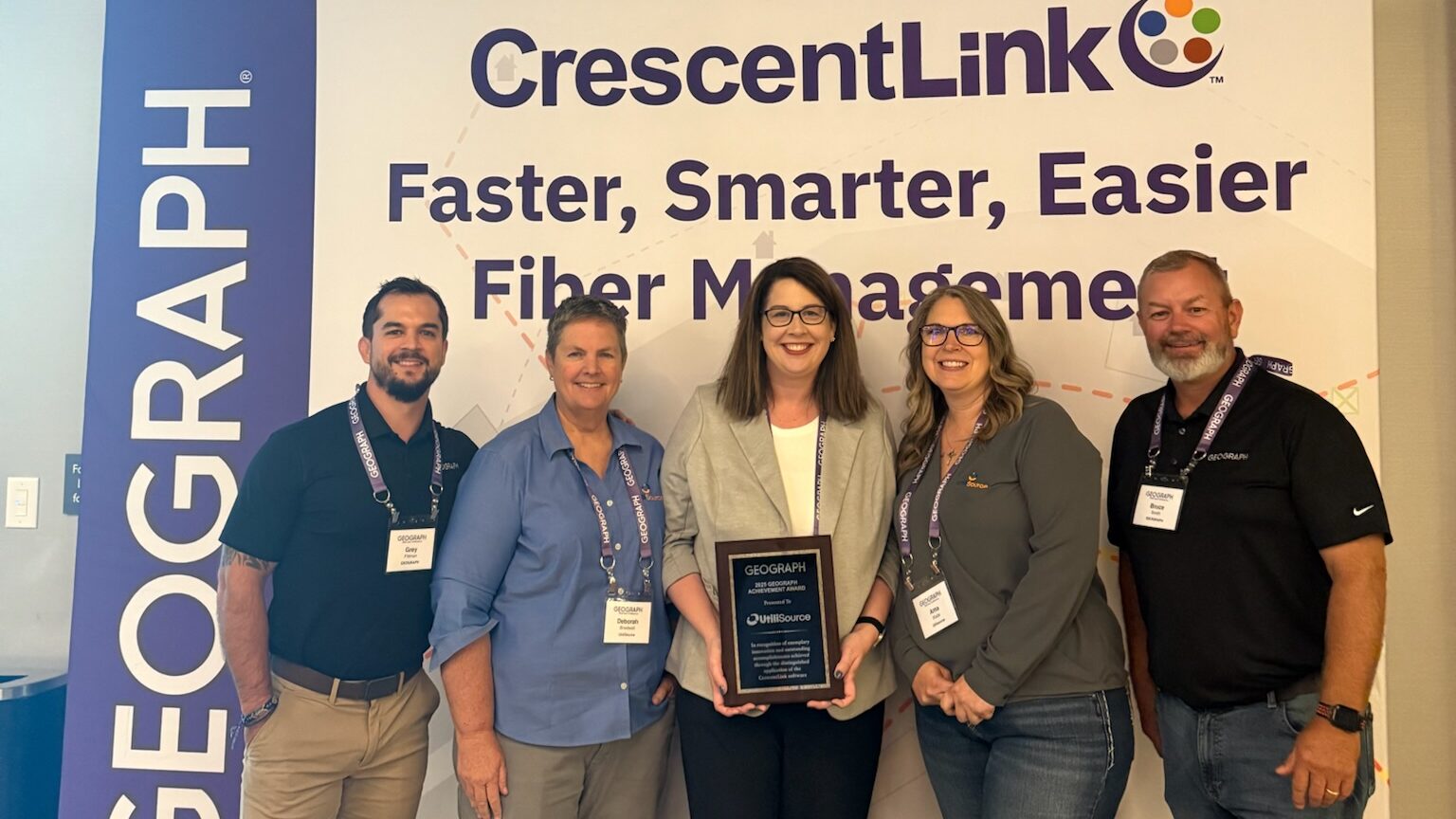The GEOGRAPH User Conference 2025 brought together customers, partners, and industry experts for two days of learning, collaboration, and discussion. With more than 180 organisations and nearly 2,000 users represented, the event highlighted not only the strength of the GEOGRAPH community but also the opportunities and challenges shaping the future of broadband and GIS.
Below, we explore the key themes and takeaways from this year’s conference.
The importance of resilience
One of the most impactful discussions focused on the ripple effect of natural disasters. While the immediate destruction is often what makes headlines, the longer-term societal and economic impacts are just as significant. Disruptions to businesses, loss of wages, increased government spending, and population shifts can affect communities for years.
The message was clear: resilience pays off. FEMA data shows that every $1 invested in mitigation saves $13 in recovery costs. For network operators, this reinforces the importance of strengthening infrastructure, investing in early warning systems, and planning with risk in mind. A proactive approach not only protects assets but also safeguards communities and ensures service continuity.

The future of GIS skills
Another central theme was the growing demand for GIS expertise. Projections suggest the US will face a shortage of 10,000–15,000 GIS professionals by 2030, particularly those with AI skills.
For broadband providers and utilities, this raises important questions: how do we ensure teams have the skills to manage increasingly complex networks, and how do we adapt as technology evolves?
The answers discussed included greater investment in apprenticeships, structured training programmes, and team development. Delegates were encouraged to assess their current teams, identify blind spots, and rethink job roles to ensure skills align with future needs.
Customer experience and strong teams
Several sessions highlighted the role of people in driving customer success. Building strong teams was presented as one of the most effective ways to improve customer experience. This means hiring for complementary skills rather than duplication, investing in training, and removing inefficiencies that slow delivery.
The reminder was that organisations fail not because of lack of opportunity but because of blind spots and poor preparation. By taking the time to build resilient, well-rounded teams, providers are better positioned to deliver reliable service and respond to disruption.
Technology and innovation
From a technology perspective, the conference underscored the benefits of a shared source of truth for network management. Sessions on ArcGIS Enterprise and CrescentLink demonstrated how moving to a centralised, enterprise deployment supports accurate data, real-time collaboration between office and field, and stronger governance through versioning and quality control.
This year also marked the very first GEOGRAPH Achievement Award, presented to UtiliSource for their work in developing BuildSource. Using CrescentLink and Esri technology, UtiliSource created a GIS-powered construction management system that streamlined field data collection, billing, and project tracking.
The impact has been significant:
- Billing cycles reduced from four weeks to just one week
- Real-time visibility into construction progress and restoration tasks
- Improved accuracy, with less than 2% discrepancy between engineering and billing data

By integrating CrescentLink into their workflows, UtiliSource has not only improved operational efficiency but also set a benchmark for how GIS technology can drive measurable results in construction management. The award celebrates this innovative use of GEOGRAPH tools to solve real-world challenges and deliver lasting value.
Expanding training with GEOGRAPH Academy
The launch of new GEOGRAPH Academy courses was another highlight. Building on its existing learning path for ArcGIS Pro and CrescentLink, the Academy has expanded with courses on fibre cable management, project planning, outage troubleshooting, and migrating from ArcMap.
The shift away from ArcMap workshops marks a new phase for training, with greater emphasis on ArcGIS Pro and advanced topics. Attendees were encouraged to share feedback on what they need most from training to ensure the Academy continues to evolve with customer requirements.
A collaborative community
Beyond the sessions, the event emphasised the value of peer-to-peer learning. With more than 1,500 years of combined experience represented in the room, attendees had the chance to exchange ideas, share lessons learned, and build new partnerships.
The conference closed with a challenge: identify at least two opportunities to take back to your organisation. Whether that is a new process, a tool, or a partnership, the aim is to turn conference discussions into tangible results over the next 12 months.
Looking ahead
The GEOGRAPH User Conference 2025 reinforced the importance of resilience, skills development, strong teams, enterprise-ready technology, and ongoing training. More than anything, it highlighted the strength of the GEOGRAPH community, a network of organisations committed to building smarter, more reliable broadband infrastructure.
As the industry faces growing demands and new challenges, these themes will remain at the centre of how GEOGRAPH supports its customers. The next 12 months will be about applying these lessons, continuing to collaborate, and ensuring that every organisation has the tools and knowledge to thrive.




